.
Kourion (Greek: Κούριον), also Curias (Pliny v. 13) or Latin: Curium, was a city in Cyprus, which endured from antiquity until the early Middle Ages. Kourion is situated on the south shores of the island to the west of the river Lycus (now called Kouris), 16 M. P. from Amathus. (Peut. Tab.), and was recorded by numerous ancient authors including Ptolemy (v. 14. § 2), Stephanus of Byzantium, Hierocles, and Pliny the Elder.d agricultural base, with fruits, such as grapes, olives and figs, nuts and legumes, and with wheat and barley as staple cereals.
History
House of Eustolios

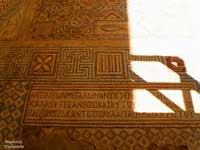
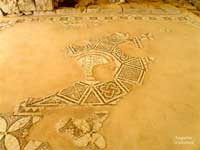

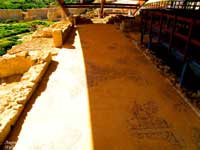
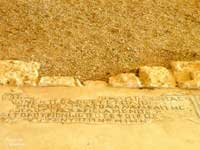

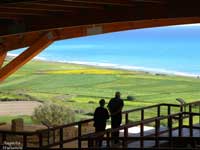
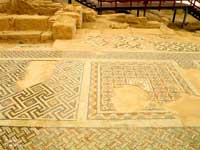


Kourion was said to have been founded by the Argives.[1][2] Stesenor, its sovereign, betrayed the cause of his country during the war against the Persians. (Herod. l. c.) Near the town was a cape (Φρούριον, Ptol. v. 14. § 2), from which sacrilegious offenders who had dared to touch the altar of Apollo were thrown into the sea. (Strab. l. c.). The city has passed through different phases from a Hellenistic, Roman, and Christian periods. For this reason the city has a very large Agora (market place) and you can find an early Christian Basilica as well within the city walls. Furthermore, large public baths which were equipped with cold, warm and hot spas, as well in the city and a nymphium is found with large octagonal swimming pool. In the large amphitheatre which sits 2000 spectators mostly gladiator games were held, therefore in the city there is Palestra or a training place for gladiators. The whole city has beautiful floor mosaics and they are mostly found in the house of Achileas and the private bath of the founder of the city.
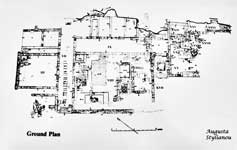
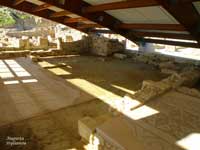
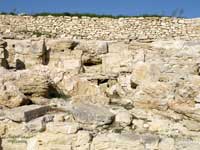
Kourion, House of the Gladiators, Kourion, House of the Gladiators, Kourion, House of the Gladiators,
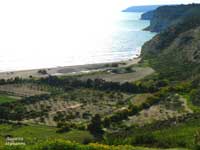
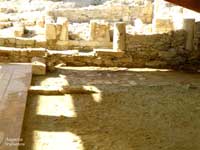
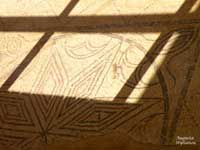
Kourion, House of the Gladiators, Kourion, House of the Gladiators, Kourion, House of the Gladiators,
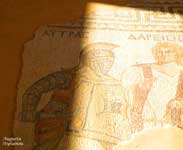
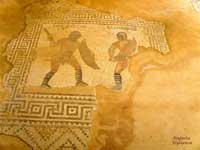
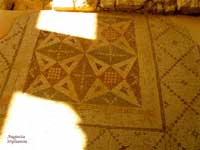
Kourion, House of the Gladiators, Kourion, House of the Gladiators, Kourion, House of the Gladiators,
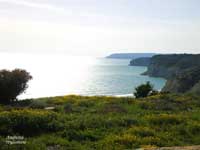
Kourion, Roman Agora
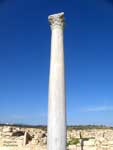
Kourion ,
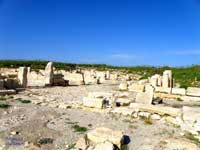
Early Christian House with a triclinium
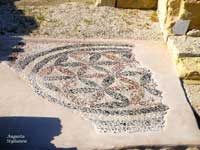
Public baths

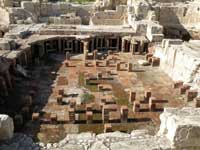
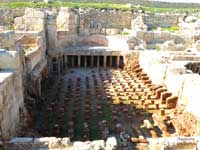
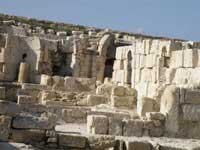
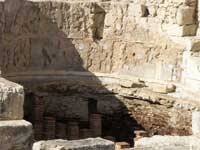
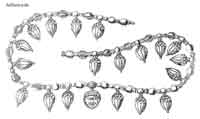
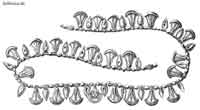

Three kilometers from the city is the sanctuary of Apollo which has stunning Cypro-Corinthian columns. On the same location there exists place of worship for a woodland god dating back to 6000 BC. In between Kourion and the sanctuary of Apollo a stadium that is around 400 m long is found; this stadium could sit up to 7,000 spectators who would watch ancient Greek sports. This magnificent city is believed to have been destroyed in the 4th century when a series of 5 strong earthquakes hit the city in a period of 80 years, and this inevitably brought an end to the city as it was known.[3]


Ruins
The ruins of Kourion, near the modern town of Episkopi, is located on one of the most fertile spots in the island, [4], with extensive ruins and including well-preserved mosaics. Also of interest are the public baths, the Nymphaeum, the necropolis, the Fountain House, House of Gladiators and House of Achilles. The most spectacular site at Kourion is the Greco-Roman amphitheatre, or forum (pictured), that has been completely restored (with the Mediterranean as a backdrop) and is used today for open air musical and theatrical performances.
Roman Agora

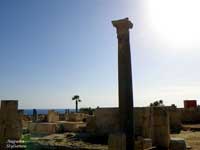
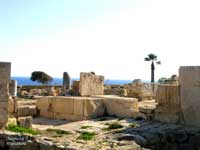
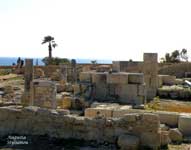
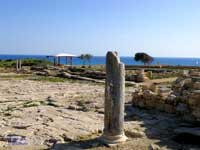
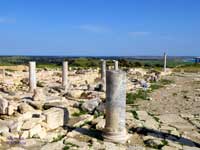
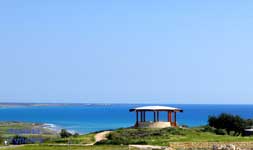
Kourion, Roman earthquake house,
Many artifacts were removed from Kourion by the notorious treasure hunter Luigi Palma di Cesnola in the late 19th century who served as Consul to Cyprus for the United States. These were transported to the U.S. where they formed the bulk of the first exhibition of the New York Metropolitan Museum of Art.[5] Some are still on exhibition today.[6][7] Thousands of other pieces however were sold to Stanford University and were destroyed by an earthquake that hit California in 1906.[8] A third portion of this collection ended up at the Semitic Museum at Harvard University.[9]
Excavations were also conducted by several other expeditions. The British Museum enriched its Cypriot artefact collection through excavations conducted during the British occupation of the island between 1893 and 1899.[10] The excavations on the theatre was were carried out by the University Museum of Philadelphia. [11] Works began in 1934 and were completed in 1949.[12]
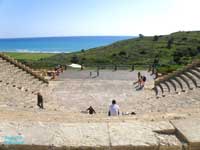
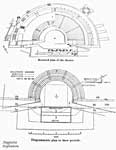
Kourion Roman Theater, Kourion Theater,


References
1. ^ Herodotus Book 5: Terpsichore - see Herodotus
2. ^ Strabo, Book 14, 6.1.3 - see Strabo
3. ^ The Day the World Ended At Kourion, National Geographic: July 1988, Vol.174, No. 1, p.30-53
4. ^ Richard Pococke, Trav. vol. ii. p. 329; Engel, Kypros, vol. i. p. 118.
5. ^ Permanent Collection - Highlights. The Metropolitan Museum of Art.. Retrieved on 2007-03-26.
6. ^ The Eastern Mediterranean: 1000 B.C.–1 A.D. Metropolitan Museum
7. ^ The Eastern Mediterranean: 2000–1000 B.C. Metropolitan Museum
8. ^ Cesnola Collection at the Semitic Museum at Harvard University
9. ^ The Cesnola Collection from Ancient Cyprus
10. ^ Department of Greek and Roman antiquities (collection's history). British Museum. Retrieved on 2007-03-25.
11. ^ Benson, J. L. (Oct., 1956). "Spirally Fluted Columns in Cyprus". American Journal of Archaeology 60 (4): 385-387. doi:doi:10.2307/500877. Retrieved on 2007-03-26.
12. ^ Stillwell, Richard (Feb. 28, 1961). "Kourion: The Theater". Proceedings of the American Philosophical Society 105 (1): 37-78. Retrieved on 2008-01-12.
* This article incorporates text from the public domain Dictionary of Greek and Roman Geography by William Smith (1857).
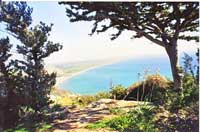
|
Archaeological sites , ancient cities in Cyprus Aetokremnos | Alassa | Apliki | Choirokoitia | Chytri | Gialia Monastery | Enkomi | Kalavasos-Tenta | Kastros | Katalymata ton Plakoton | Klimonas | Kourion | Kyrenia ship | Lapithos | Marion | Marki Alonia | Mnemata Site | Paphos | Salamis | Shillourokambos | Soli | Tamassos | Tombs of the Kings (Paphos) | |

| Ancient Greece
Science, Technology , Medicine , Warfare, , Biographies , Life , Cities/Places/Maps , Arts , Literature , Philosophy ,Olympics, Mythology , History , Images Medieval Greece / Byzantine Empire Science, Technology, Arts, , Warfare , Literature, Biographies, Icons, History Modern Greece Cities, Islands, Regions, Fauna/Flora ,Biographies , History , Warfare, Science/Technology, Literature, Music , Arts , Film/Actors , Sport , Fashion --- |
Retrieved from "http://en.wikipedia.org/"
All text is available under the terms of the GNU Free Documentation License

